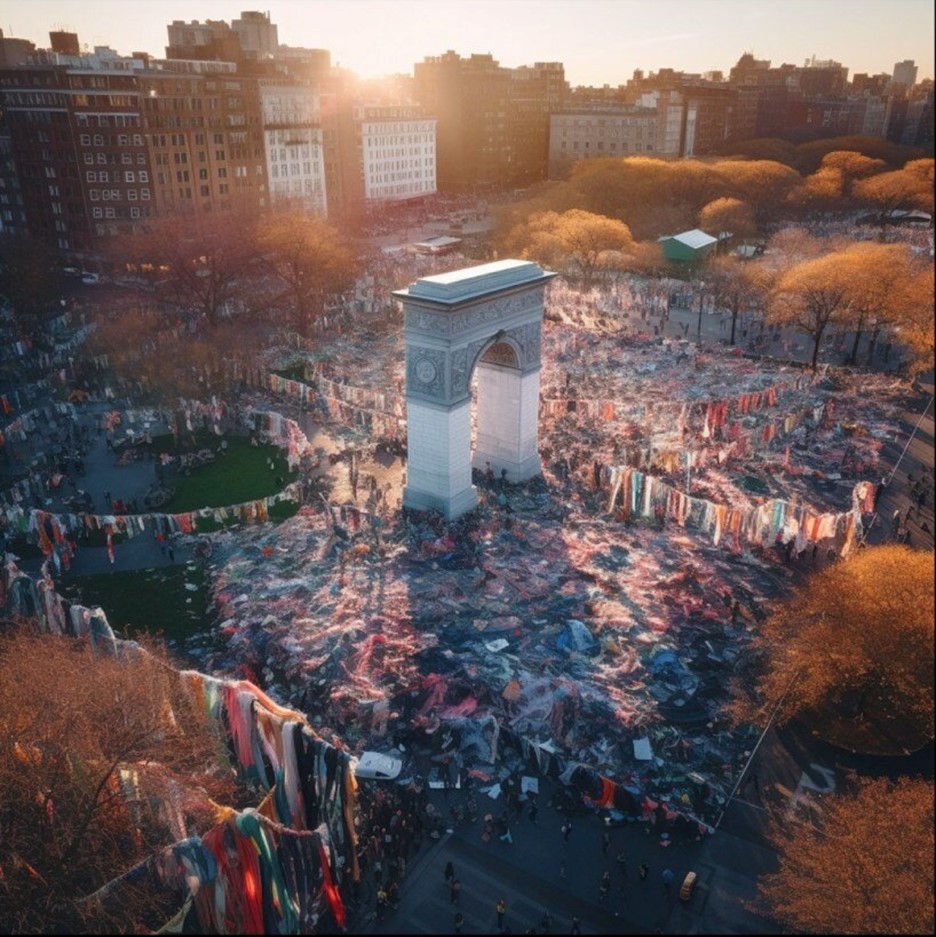
Ilaria Marzano’s artwork Back To Square One confronts us with a bleak scenario: what if textile remnants from Accra, a city in Ghana, where the West discards 15 million garments weekly, were instead deposited in our squares and streets? The response is embodied in Marzano’s fusion of textile maps and AI-generated images, which depicts New York’s Washington Square, Paris’ Champs-Élysées, and Milan’s Piazza Duomo taken over by textile waste. In the series of images, these global fashion capitals bear the weight of the textile waste crisis and provide a reminder of the power dynamics between waste producers and those grappling with it.
Presented at Info+ 2023 in Edinburgh, Ilaria Marzano’s installation showcases city maps of New York, Paris, and Milan on recycled cotton canvases. The artist transforms each canvas into a patchwork of fabric scraps, illustrating the expansive surface area occupied by textile waste within bales of 200 garments, each measuring 70x50cm. The physical manifestation of waste integrates with an AI-generated video, projecting dystopian scenarios that the artist believes could unfold under such circumstances.

For this work, Ilaria Marzano drew from the dire situation in Accra. The Western practice of discarding used or unwanted clothing, some of which finds its way to Accra’s thriving second-hand market, sets the stage for an unsettling paradox. Ghanaian merchants purchase these bales, but the poor quality due to the influence of fast fashion, renders most unusable and unsellable. Much of the acquired clothing then becomes immediately unusable, sitting as a burden for local populations tasked with managing this enormous waste, and inadequate resources to do so efficiently.
 TEXTILES.ORG
TEXTILES.ORG


